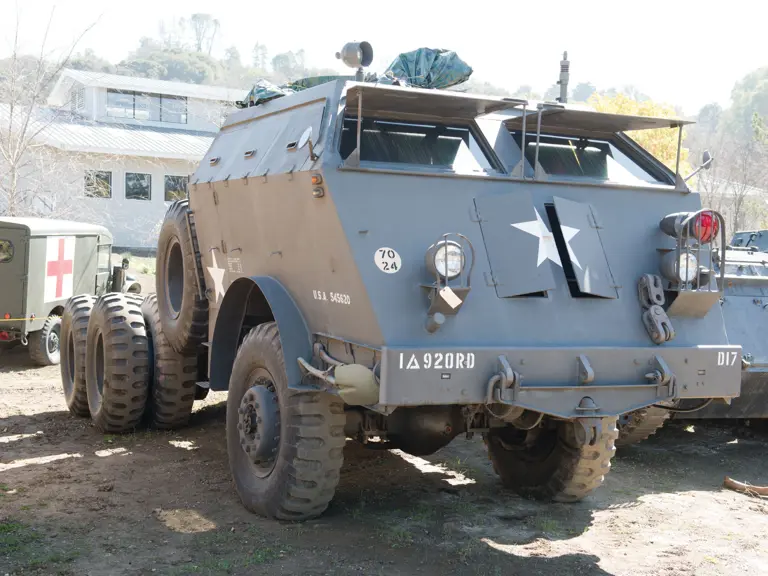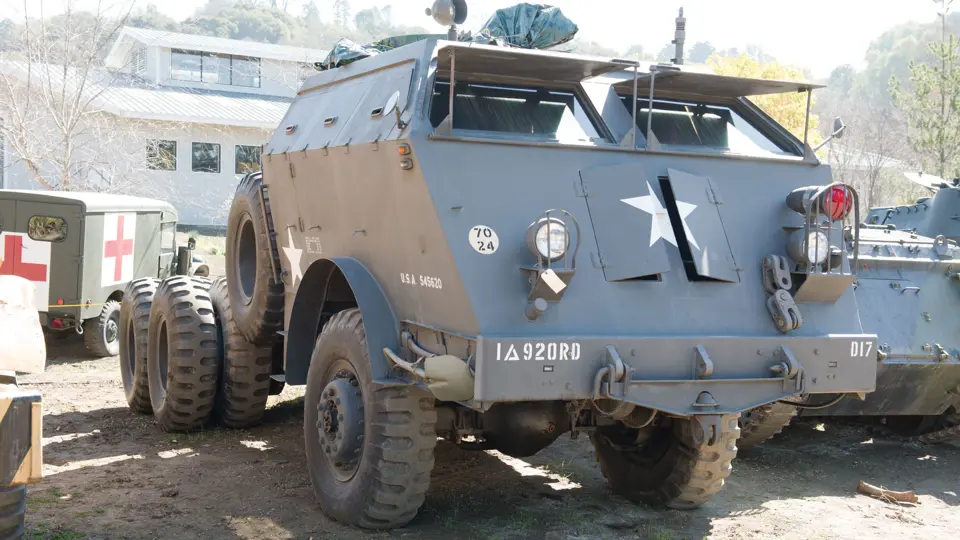 | Portola Valley, California
| Portola Valley, California
Weight: 24.4-tons (22,178-kg)
Length: 25' 5” (7.77-m)
Width: 10' 8” (3.31-m)
Height: 10' 2” (3.12-m)
Crew: 4-6
Armor:
.5” (13-mm) all around
Weapons:
-Primary
1x .50-cal M2HB machine gun
-Secondary
Assorted crew weapons
-Ammunition
600x .50-cal
Engine: Hall-Scott 440, 6-cylinder gasoline, 240-hp
Power/weight: 9.8-hp/ton
Fuel Capacity: 120-USG (454-l)
Range: 120-miles (193-km)
Speed: 28-mph (45-km/h)
The tractor being offered, M26 tank retriever tractor “Pacific”, serial number 979, was built in December 1944 by Pacific Car & Foundry (PCF) in in Billings, Montana. This rare, armored cab vehicle is in unrestored, original condition and is in excellent shape. The engine runs perfectly. Shift linkages and drivers controls operate normally. The vehicle tires are in very good shape with the spare being like new. The fuel tank has been cleaned out and is in very good condition. The truck has been test driven and drives well. The winches are untested. The pioneer tools are present. The M49C gun ring is in excellent condition. The interior is in very good condition.
The M26 was designed in response an Army requirement for a tank recovery vehicle that was capable of operating in the desert. Developed by the Knuckey Truck Company of San Francisco, it was powered by a 1,090 cubic inch displacement, 6-cylinder Hall-Scott Model 440 engine. It was equipped with an armored cab to allow tank recovery under fire. The Army accepted the M26 for production, but felt the Knuckey was too small of a company to produce the truck in required numbers. Production was contracted out to PCF from where the vehicle obtained its nickname “Pacific”. PCF was originally supposed to have built the truck at its facilities in Washington State, but a lack of labor in the area forced them to move production to Montana.
The M26 first saw service in the summer of 1944 in Europe. It was capable of recovering all tanks in U.S. Army service at the time. Often seen towing the M15 semi-trailer, it was used to transport tanks to front line replacement units and to recover vehicles from the battlefield. They were also used to haul heavy equipment and even landing craft for river crossings. When combined with the M15, the combination became the M25 Tank Transporter. With the vast majority of its use not taking place under fire, it was found that the armored cab was unnecessary. Late in the war, a soft-cab version, the M26A1, entered service. This created a weight savings of around 10-tons, which translated into better off-road capability and greater load capacity.
The M26 remained in U.S. Army service post-war but were phased out in the early 1950s.
Transport Cost to Storage: $2,640 - Tractor & $2,904 - Trailer





